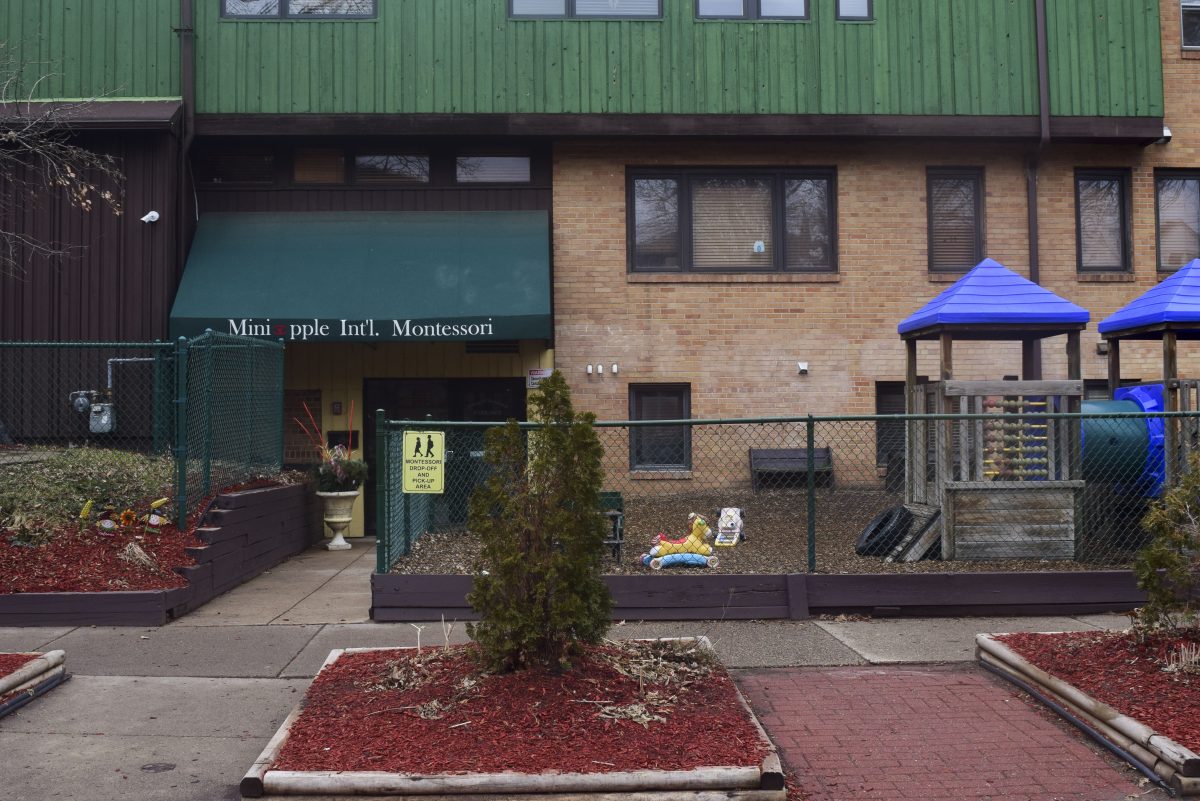After the sun sets in Southeast Como, the neighborhood’s residents often become alert and uneasy as they make their way home down dimly lit sidewalks.
But the Southeast Como Improvement Association is looking for solutions to that problem by administering an online survey for residents that aims to better understand the issue and to gauge their interest in various solutions.
“It’s a safe neighborhood, but it’s very dark, so you have to look over your shoulder,” said economics and global studies junior Feven Gerezgiher.
SECIA director Ricardo McCurley said the group has formulated four different options for addressing the lighting problem: bumping up area property taxes, seeking outside funding, or improving existing poles by installing LED lights or attaching mercury-vapor lights to them.
“There’s a lot of complexity to it,” McCurley said. “And so far, our research has said it’s a mixed bag.”
Residents living south of Como Avenue Southeast benefit from additional pedestrian lights, he said. But people located north of Como rely on Xcel Energy utility poles alone, which McCurley said are spread out and don’t give much light.
The first proposed lighting solution would charge homeowners an average property tax increase of $4,000 over 20 years, he said, and the additional $200 per year for area residents would go toward installing “fancy new pedestrian-style lighting.”
Craig Janssen, owner of Elmwood Properties, which operates 10 rental properties in the Southeast Como area, said the price doesn’t sound too steep.
“That’s a bargain,” he said. “I’d be happy to pay that.”
But as mandated by the city, lighting replacements in any four-block area that are funded by a property tax increase require a 70 percent vote of approval from that area’s property owners, McCurley said.
Other neighborhoods have struggled to garner that kind of majority support, he said.
Neighbors could also choose to instead put pressure on Xcel Energy to update its existing utility poles by installing new LED lighting or attaching mercury-vapor lights to them — a solution that presents its own set of difficulties, McCurley said.
“Xcel is dragging their feet on the LED replacement issue because LEDs obviously use much less energy,” he said.
Another alternative proposed remedy would seek outside funding to add lighting.
Some, including McCurley, say the University of Minnesota could be an obvious option for financial support.
“The University should put more funding into it,” said Patrick Dugan, strategic communications junior and former Southeast Como resident. “It’s their students at risk.”
Earlier this year, the University awarded a $15,000 Good Neighbor Fund grant to Project Lighthouse, a project headed by Student and Community Relations.
Phillip Kelly, who led Project Lighthouse this past summer, said SECIA’s efforts may be part of a larger issue. He said he knew of multiple University neighborhoods like Dinkytown and Cedar-Riverside that have sought solutions to their lighting qualms.
Janssen said he thinks Elmwood Properties should make improvements for Southeast Como a priority.
“Lighting is the most useful crime deterrent and one of the best things you can do to improve pride in property ownership,” he said.
Walking home safely at night is a major concern for area residents, said current neighborhood resident Gerezgiher.
“If I were mugged, would I be able to describe the mugger to the UMPD?” she asked. “No.”
McCurley said he’s found the issue to be surprisingly complex, as other community members have raised concern about the cost and the light pollution the proposed adjustments could incur.
“You’d think everyone wants good lighting on their street,” he said, “but that’s not the case.”





















![Gwyn, Macy, Daniel, and Nora [pictured left to right] brave the sub-zero windchill on an icy afternoon to skate together in Van Cleve park. The park, located just north of Dinkytown in Como, becomes a popular winter activity hub for students and nearby residents each year when the park’s fields are frozen to create a public ice skating rink.](https://mndaily.com/wp-content/uploads/2024/01/FzDx2ZjdXLtO33r1j1atrf7jrtQtocs9vnp8k2AT-2-1200x801.jpeg)
